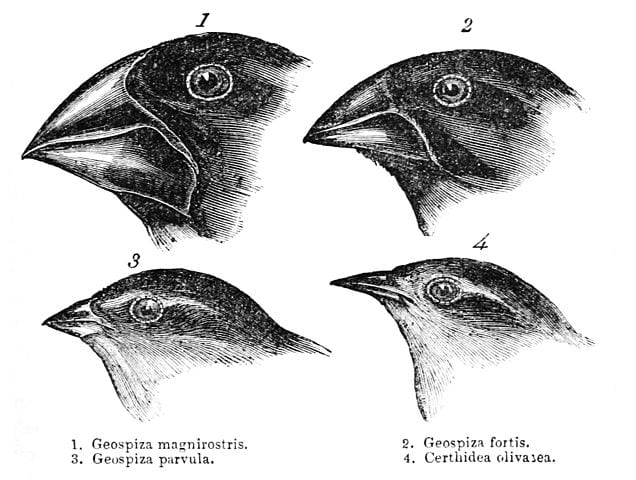Welcome to Star Wars week here at the Athens Science Observer. To help celebrate May the 4th – Star Wars Day – we wanted to take a look at the real life science of that galaxy far far away.
When Kanjiklub and the Guavian Death Gang boarded the Eravana, the three most beloved characters in The Force Awakens suddenly found themselves in a tight spot. Thanks to a con that was risky even by Han Solo's standards, our trio was left stranded while the film's more charismatic heroes made a narrow escape on the Millennium Falcon. Yes, after eating a large number of the galaxy's most dangerous gangsters and scaring off the rest, those poor, adorable rathtars were left to fend for themselves.
Thanks to the ship's presumably heavy infestation with Corellian scavenge rats combined with a rathtar's ability to eat literally anything, the marooned rathtars would have been able to feed and reproduce without a problem. But how would their newfound isolation affect them? Would they continue to be a colony of rathtars just like the ones on their home planet?
When a new population is founded by a few individuals from a larger group — like, for example, when three rathtars are stranded on a Baleen-class heavy freighter — a phenomenon called the “founder effect†is observed. The founder effect is a loss in genetic diversity in this new colony resulting from a random sampling of the individuals from the original population that isn't necessarily representative of that original population. What does that mean in Galactic Basic?
Say, for example, that most rathtars have tentacles ranging in length from eight to 11 horrifying feet long and an appalling number of blood-red eyes. However, by sheer chance, or maybe because they are easier to catch, the rathtars Han Solo happened to capture had tentacles that were a merely terrifying eight and a half feet long and puce-colored eyes.
The growing rathtar colony on the Eravana was derived from those select few individuals Han Solo captured. Therefore, even though rathtars throughout the galaxy have a much wider variety of tentacle lengths and eye colors, it can be expected that after several generations, all of the Eravana rathtars will have eight and a half foot long tentacles and puce-colored eyes. There was a loss in genetic diversity in the new group, meaning that fewer versions of the genes that determine tentacle length and eye color are available to choose from when a new rathtar is produced.
This founder effect was famously first described by Darwin in the context of finches living on the Galapagos Islands. He noted that finches living on different Galapagos Islands appeared to have a common ancestry, but had grown different characteristics once isolated on their separate islands. Like with the Eravana rathtars, the finch populations on the different islands were established by a small number of individuals from the larger, mainland finch populations.

Over time, the differences in genetic diversity between the finch populations weren't the only reason why they no longer resembled each other. Darwin noted that the finches' beaks were different sizes and shapes, based on whichever type of beak was best suited to eating the specific seeds and nuts available on their islands. Something very similar would have happened to the Eravana rathtars.
Not much is known about the rathtars' home world, but it is likely quite different from the metallic confines of a freighter. As a result, the Eravana rathtars would have also gone through the same process as Darwin's finches, known as adaptive radiation, in order to fit into their new environment.
With successive generations, rathtar traits would naturally be selected to help them thrive on the Eravana, like smaller body size to fit through the narrow corridors and more nimble tentacles to better snack on unsuspecting Corellian scavenge rats. Given enough time, the Eravana rathtars might even become so distinct from rathtars in general that they would form a completely new species!
So if you, like me, are concerned about the marooned rathtars, worry no more! Thanks to natural selection and a presumed rat infestation, they aren't lost and lonely, drifting aimlessly in space; the Eravana rathtars are the proud founding fathers of a new species in a galaxy far, far away.
About the Author
 Tara Bracken is a Ph.D. candidate at the University of Georgia Department of Infectious Diseases specializing in Global Health. Tara's research focuses on how the host's response to disease worsens malaria infection in children under the age of five and pregnant women. If you're a nerd and like fun, be sure to check out her blog, Of Microbes and Men or you can connect with her on Twitter at @microbesandmen! Tara Bracken is a Ph.D. candidate at the University of Georgia Department of Infectious Diseases specializing in Global Health. Tara's research focuses on how the host's response to disease worsens malaria infection in children under the age of five and pregnant women. If you're a nerd and like fun, be sure to check out her blog, Of Microbes and Men or you can connect with her on Twitter at @microbesandmen! |
About the Author
-
athenssciencecafehttps://athensscienceobserver.com/author/athenssciencecafe/April 17, 2020
-
athenssciencecafehttps://athensscienceobserver.com/author/athenssciencecafe/April 12, 2020
-
athenssciencecafehttps://athensscienceobserver.com/author/athenssciencecafe/April 3, 2020
-
athenssciencecafehttps://athensscienceobserver.com/author/athenssciencecafe/March 30, 2020







